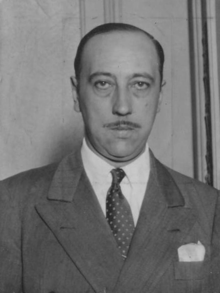
Fascism is a far-right, authoritarian, ultranationalist political ideology and movement, characterized by a dictatorial leader, centralized autocracy, militarism, forcible suppression of opposition, belief in a natural social hierarchy, subordination of individual interests for the perceived good of the nation and race, and strong regimentation of society and the economy.
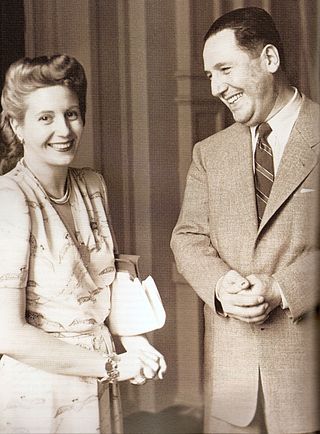
Peronism, also called justicialism, is an Argentine political movement based on the ideas and legacy of Argentine ruler Juan Perón (1895–1974). It has been an influential movement in 20th and 21st century Argentine politics. Since 1946, Peronists have won 10 out of the 13 presidential elections in which they have been allowed to run. The main Peronist party is the Justicialist Party. The policies of Peronist presidents have differed greatly, but the general ideology has been described as "a vague blend of nationalism and labourism" or populism.

Mariano Grondona is an Argentine lawyer, sociologist, political scientist, essayist, and commentator. He has been a journalist for several decades, contributing to print media and television, and has authored numerous books. Additionally, he has held teaching positions in several universities, both in Argentina and abroad.

The Movimiento Nacionalista Tacuara was an Argentine far right orthodox peronist and fascist movement from 1955 through the 1960s, which later integrated Juan Perón's right-wing "Special Formations". Linked to the more radical sectors of the Peronist movement, and directly inspired by Julio Meinvielle's Catholic pronouncements, Tacuara defended nationalist, Catholic, anti-liberal, anti-communist, antisemitic and anti-democratic ideas, and had as its first model the Spaniard Primo de Rivera's fascist Falange. In the years 1960–66, the movement incorporated Neo Nazi elements. Its main leaders were Alberto Ezcurra Medrano, José Luis "Joe" Baxter, Oscar Denovi, and Eduardo Rosa. Various ideologically contradictory movements emerged from this group. After three important splits in the early 1960s, the police cracked down on most factions in March 1964. A year later, the entire MNT was outlawed by President Arturo Illia (UCR). Composed of young people from right-wing backgrounds, it has been called the "first urban guerrilla group in Argentina".
Falangism in Latin America has been a feature of political life since the 1930s as movements looked to the national syndicalist clerical fascism of the Spanish state and sought to apply it to other Spanish-speaking countries. From the mid-1930s, the Falange Exterior, effectively an overseas version of the Spanish Falange, was active throughout Latin America in order to drum up support among Hispanic communities. However, the ideas would soon permeate into indigenous political groups. The term "Falangism" should not be applied to the military dictatorships of such figures as Alfredo Stroessner, Augusto Pinochet and Rafael Trujillo because while these individuals often enjoyed close relations to Francisco Franco's Spain, their military nature and frequent lack of commitment to national syndicalism and the corporate state mean that they should not be classed as Falangist. The phenomenon can be seen in a number of movements both past and present.
Fascism in South America is an assortment of political parties and movements modelled on fascism. Although originating and primarily associated with Europe, the ideology crossed the Atlantic Ocean in the interwar period and had an influence on South American politics. The original Italian fascism had a deep impact in the region. Although the ideas of Falangism probably had the deepest impact in South America, largely due to Hispanidad, more generic fascism was also an important factor in regional politics.

Manuel Gálvez was an Argentine novelist, poet, essayist, historian and biographer.
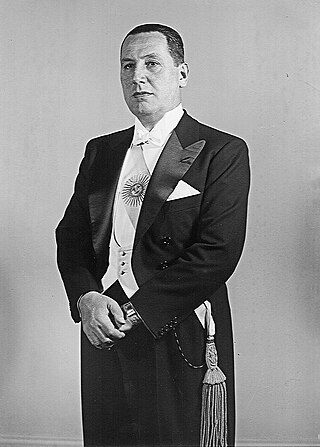
Juan Domingo Perón was an Argentine Army general and politician who served as President of Argentina from 1946 to his overthrow in 1955, and again from October 1973 to his death in July 1974. He had previously served in several government positions, including Minister of Labour and Vice President under previous presidents Pedro Pablo Ramírez and Edelmiro Farrell.
Rodolfo Irazusta was an Argentine writer and politician who was one of the leading lights of the nationalist movement of the 1920s and 1930s. He collaborated closely with his younger brother Julio Irazusta throughout his career.
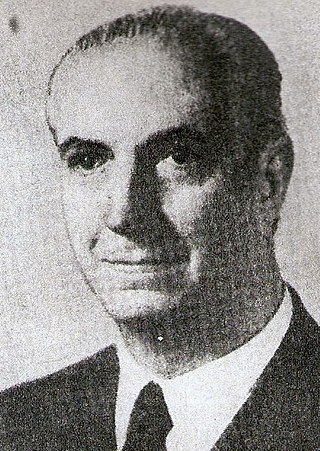
Julio Alberto Gustavo Irazusta was an Argentine writer and politician who was one of the leading lights of the nationalist movement of the 1920s and 1930s. He collaborated closely with his older brother Rodolfo Irazusta throughout his career.
Juan Emiliano Carulla was an Argentine physician and nationalist politician. He was most prominent under the military regime in power during the early 1930s.

Father Julio Meinvielle was an Argentine priest and prolific writer. A leading Roman Catholic Church thinker of his time, he was associated with the far right tendency within Argentine Catholic thinking. As a polemicist he had a strong influence on the development of nacionalismo.

Mario Octavio Amadeo was an Argentine conservative nationalist politician, diplomat and writer who served as a minister in the government of Eduardo Lonardi. He belonged to the highly influential right-wing tendency prominent in Argentine politics either side of the Second World War.

Nimio de Anquín (1896–1979) was an Argentine Thomist writer and fascist politician. Seeking to combine European models of fascism with his own attachment to the Catholic Church he led several movements and for a time had a strong following. Subsequently, however, he lost political influence, and his later life was mainly focused on his academic career.

The 1943 Argentine coup d'état, also known as the Revolution of '43, was a coup d'état on 4 June 1943 that ended the government of Ramón Castillo, who had been fraudulently elected to the office of vice-president before succeeding to the presidency in 1942 as part of the period known as the Infamous Decade. The military was opposed to Governor Robustiano Patrón Costas, Castillo's hand-picked successor, a major landowner in Salta Province and a primary stockholder in the sugar industry. The only serious resistance to the military coup came from the Argentine Navy, which confronted the advancing army columns at the Navy Petty-Officers School of Mechanics.
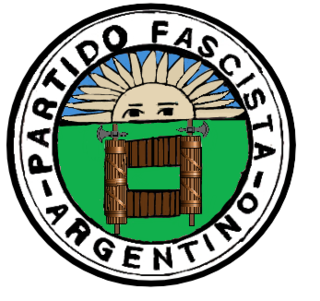
The Argentine Fascist Party was a fascist political party in Argentina from 1932 until its official disbandment in 1936, when it was succeeded by the National Fascist Union. Founded by Italian Argentines, the party was formed as a breakaway faction from Argentina's National Fascist Party. It was based upon Italian fascism and was recognized by Benito Mussolini's National Fascist Party in 1935. In the 1930s the party became a mass movement, particularly in the Córdoba reguon. Nicholás Vitelli led the PFA's branch in Córdoba until his death in 1934, when Nimio de Anquín took the leadership of the party.
Roberto de Laferrère was an Argentinean writer and political activist. He was one of the leading figures in the nationalist movement active amongst a group of leading intellectuals in the 1930s.
Juan Carlos Goyeneche was an Argentine Catholic nationalist politician. Also highly sympathetic to Nazism, during the Second World War Goyeneche travelled to Nazi Germany where he met a number of leading figures. He was the son of Mayor of Buenos Aires Arturo Goyeneche and the grandson of a President of Uruguay.

The Nationalist Liberation Alliance, originally known as the Argentine Civic Legion from 1931 to 1937, the Alliance of Nationalist Youth from 1937 to 1943, and then using its final name from 1943 to 1955, was a Nacionalista and fascist movement.

Federico Finchelstein is an Argentine historian and chair of the history department at the New School for Social Research and is director of the Janey Program in Latin American Studies.
